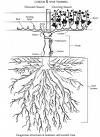It wouldn’t be a stretch to say that Chardonnay is the white wine darling of wine consumers almost everywhere. I equivocate a little  with that statement, since there are many parts of the wine world where other white grapes, like Riesling, not only mature better but show more finesse with greater longevity than Chardonnay. In the opinion of many critics, winemakers and wine drinkers, Riesling is more versatile than Chardonnay, offers a broader flavor profile than Sauvignon Blanc, and is more widely planted than Marsanne, Roussanne or that darling from Down Under, Semillon.
with that statement, since there are many parts of the wine world where other white grapes, like Riesling, not only mature better but show more finesse with greater longevity than Chardonnay. In the opinion of many critics, winemakers and wine drinkers, Riesling is more versatile than Chardonnay, offers a broader flavor profile than Sauvignon Blanc, and is more widely planted than Marsanne, Roussanne or that darling from Down Under, Semillon.
But Riesling has been underappreciated for decades. The Germans have been making taste-tempting Rieslings in styles ranging from dry to sweet for years, but despite their many efforts to extol the charms of Riesling wines, wine consumers ignored the pleas, claiming that Riesling is ‘too sweet.’ Across the Rhine River in France, dry Rieslings have been crafted by the Alsatians since the First World War, but these too never attracted a large following. With the exception of a small handful of worthy Rieslings from Monterey and the Anderson Valley, California, Rieslings are mostly a bland disappointment. Even the Pacific Northwest, where Riesling once thrived, wineries cast it aside in favor of other whites like Chardonnay.
Thankfully, however, the tide has shifted, thanks in great part to the Australians for promoting their excellent Rieslings from Claire, Eden Valley and Western Australia and the renaissance of Riesling in Washington, New York’s Finger Lakes and the startling success of Canadian Riesling Ice Wines. Other signs of recent successes include a rise in Riesling exports from Germany and according to an Nielson survey Riesling, is the number one fastest growing varietal wine as of the end of 2007.
These heart-warming facts and much more can be found in a new booklet called ‘Riesling Rules,’ available free from Pacific Rim wines. Included in the compact, pocket-size booklet are the usual facts, namely, history and food pairings, but there’s also an explanation of Riesling-related terms like ‘petrol’ and ‘minerality.’ And you’ll find a comprehensive section on how to untangle the complexities of the German Pradikat system for designating ripeness (and indirectly, sweetness) including a German oechsle-to-brix conversion table (for those Riesling fans who have tried to make sense of grape maturity measured on the German oechsle scale). The booklet also provides capsules of the major Riesling wine regions, as well as other information.
To get your free copy, log on to Pacific Rim’s website: www.rieslingrules.com. Once on the site, you can either view the booklet online or request a personal copy.
6
